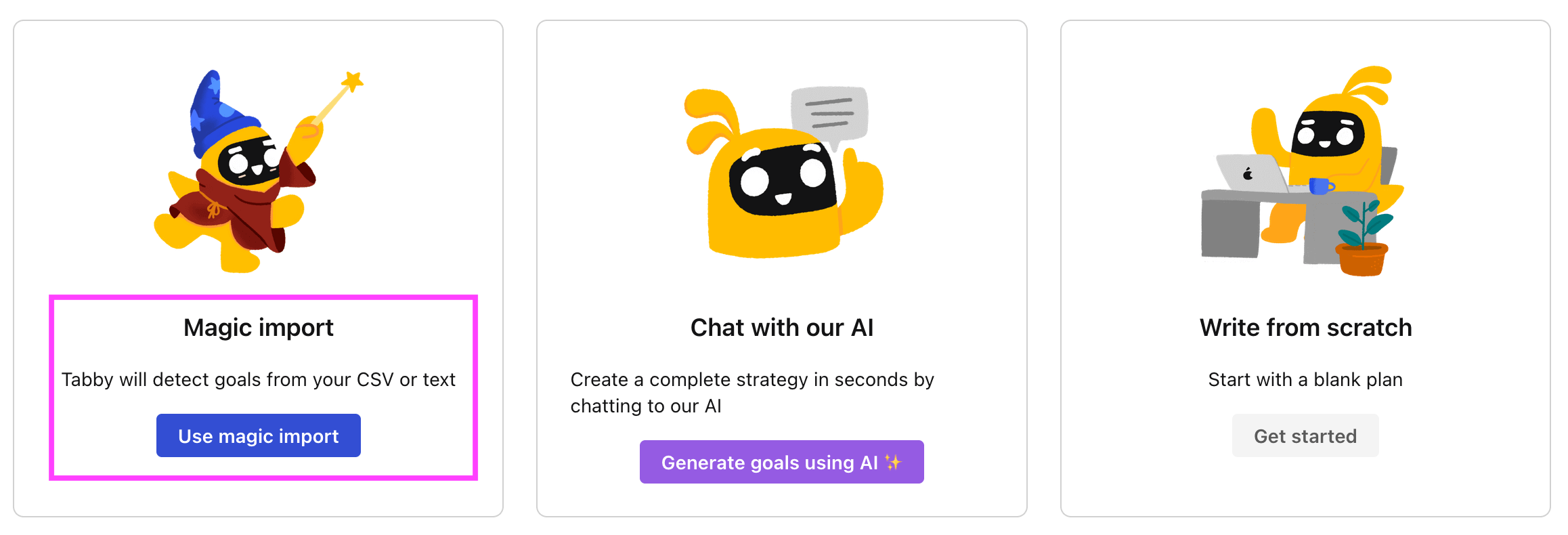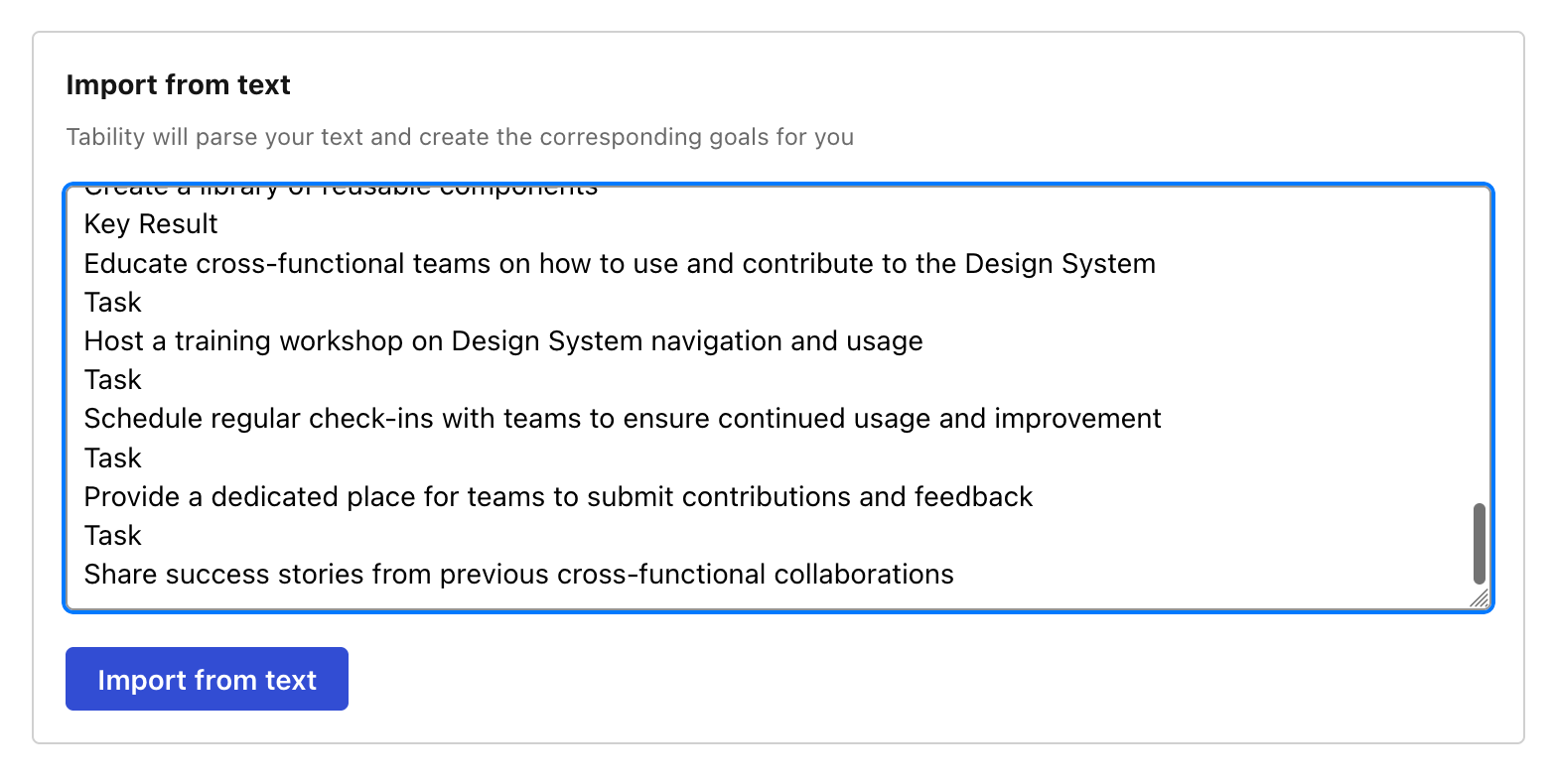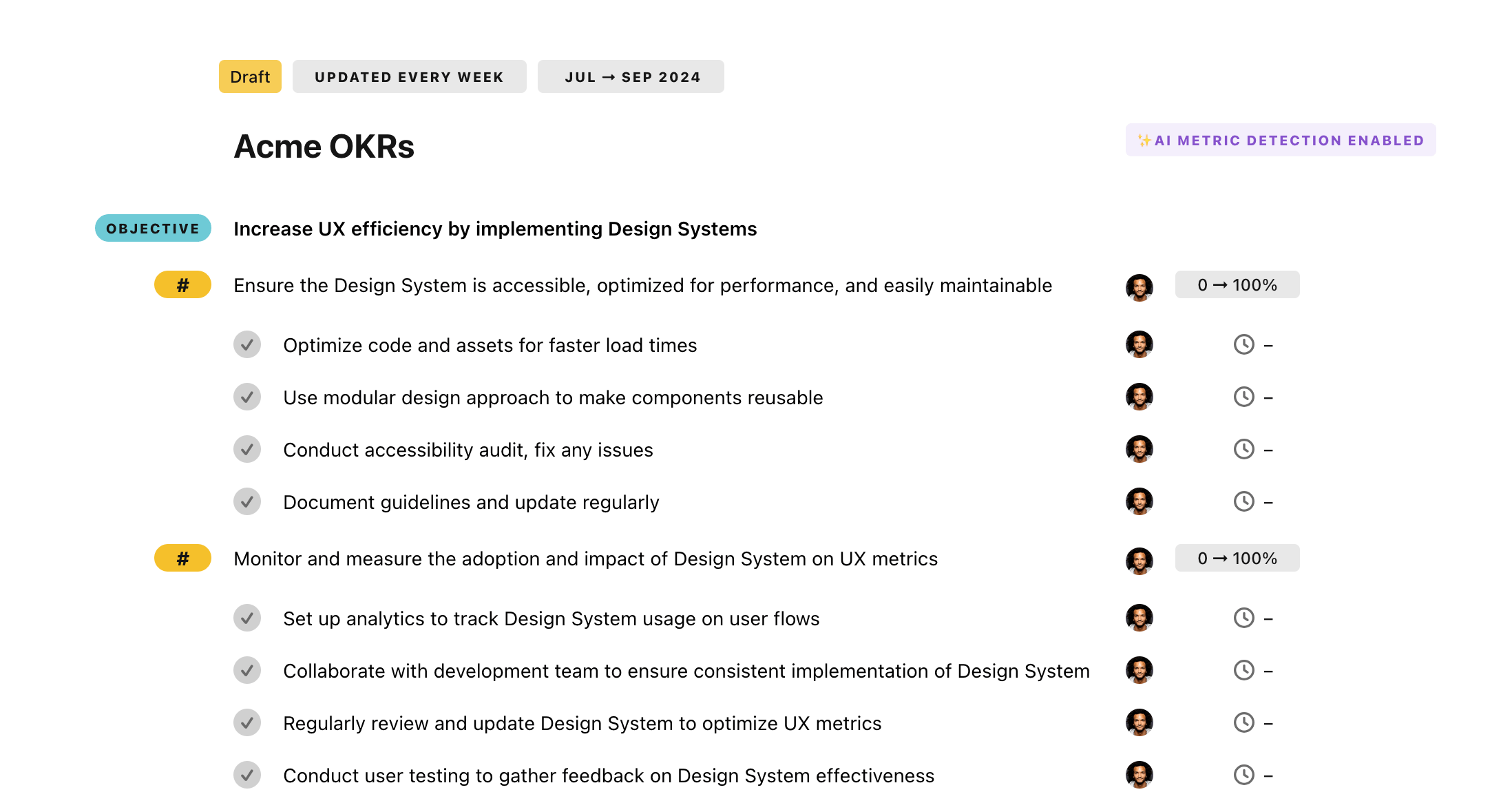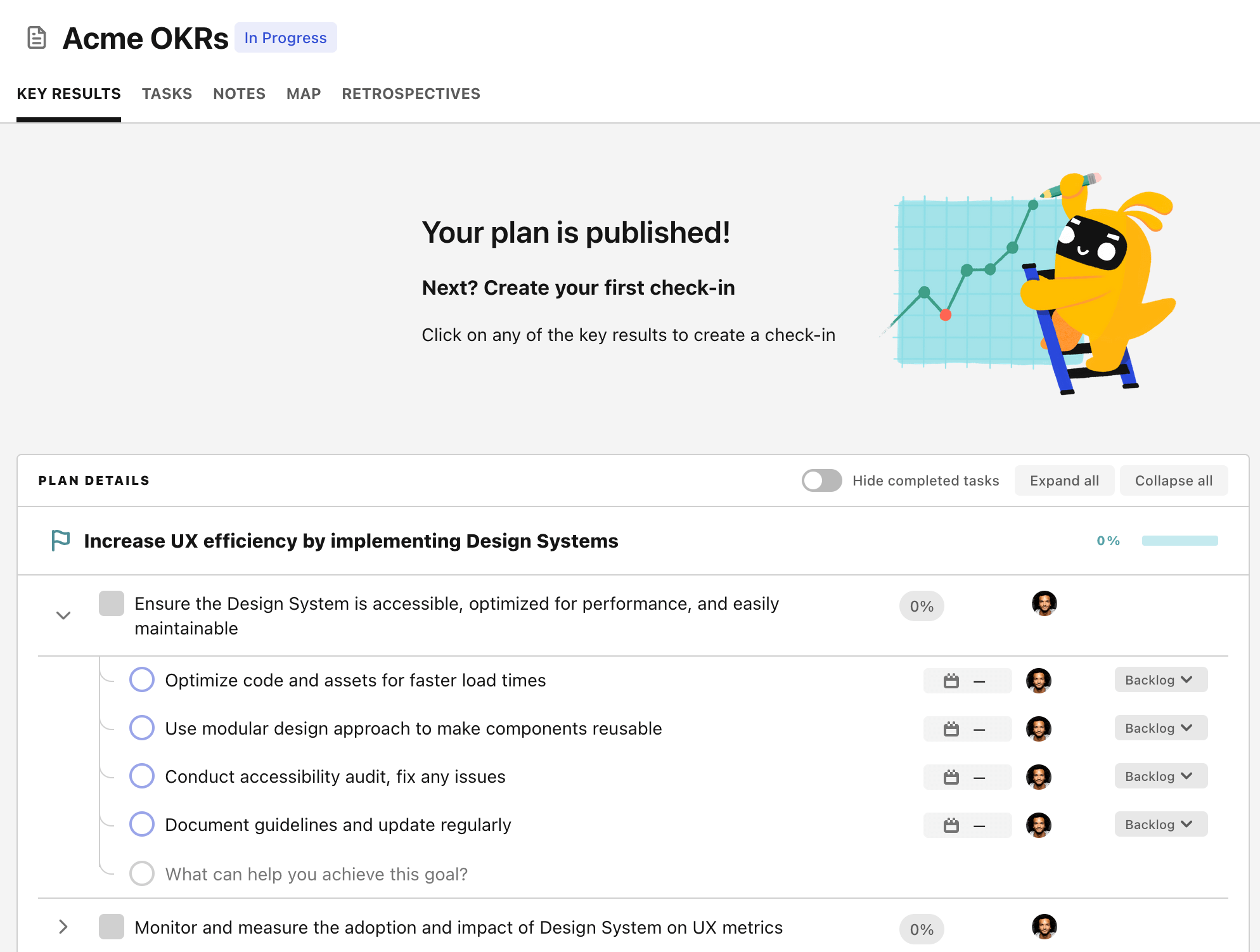OKR template to increase demo scheduling efficiency through inbound leads
Your OKR template
The next outcome highlights the importance of achieving and maintaining a 50% conversion rate of leads into demos. This will involve training the sales team for effective product presentations, implementing a feedback system for continuous adjustments and improvements, and enhancing targeting techniques to ensure the acquisition of quality leads.
Further, quick response time to leads is crucial in improving the overall efficiency of the process. The aim is to reduce lead response time to under two hours. The necessary steps toward this outcome include appointing a dedicated lead response team, automating email responses to new leads, and providing regular training on efficient lead processing.
In summary, the OKR encompasses goals to increase and sustain a significant conversion rate of leads to demos, benefits of an expeditious lead response time, and an overall increase in demo scheduling through inbound leads.
ObjectiveIncrease demo scheduling efficiency through inbound leads
KRAchieve 25% increase in demos scheduled via inbound leads
Improve landing page design for better lead conversion
Implement aggressive email marketing campaign
Train team to convert inbound queries to demos
KRMaintain a 50% conversion rate for leads to demos
Train sales team on effective product presentation
Implement feedback system for continuous improvement
Enhance targeting to attain quality leads
KRImprove lead response time to under 2 hours
Implement a dedicated lead response team
Automate email responses to new leads
Provide regular training on quick lead processing
How to edit and track OKRs with Tability
You'll probably want to edit the examples in this post, and Tability is the perfect tool for it.
Tability is an AI-powered platform that helps teams set better goals, monitor execution, and get help to achieve their objectives faster.
With Tability you can:
- Use AI to draft a complete set of OKRs in seconds
- Connect your OKRs and team goals to your project
- Automate reporting with integrations and built-in dashboard
Instead of having to copy the content of the OKR examples in a doc or spreadsheet, you can use Tability’s magic importer to start using any of the examples in this page.
The import process can be done in seconds, allowing you to edit OKRs directly in a platform that knows how to manage and track goals.
Step 1. Sign up for a free Tability account
Go tohttps://tability.app/signup and create your account (it's free!)
Step 2. Create a plan
Follow the steps after your onboarding to create your first plan, you should get to a page that looks like the picture below.

Step 3. Use the magic importer
Click on Use magic import to open up the Magic Import modal.
Now, go back to the OKR examples, and click on Copy on the example that you’d like to use.

Paste the content in the text import section. Don’t worry about the formatting, Tability’s AI will be able to parse it!

Now, just click on Import from text and let the magic happen.

Once your example is in the plan editor, you will be able to:
- Edit the objectives, key results, and tasks
- Click on the target 0 → 100% to set better target
- Use the tips and the AI to refine your goals
Step 4. Publish your plan
Once you’re done editing, you can publish your plan to switch to the goal-tracking mode.

From there you will have access to all the features that will help you and your team save hours with OKR reporting.
- 10+ built-in dashboards to visualise progress on your goals
- Weekly reminders, data connectors, and smart notifications
- 9 views to map OKRs to strategic projects
- Strategy map to align teams at scale